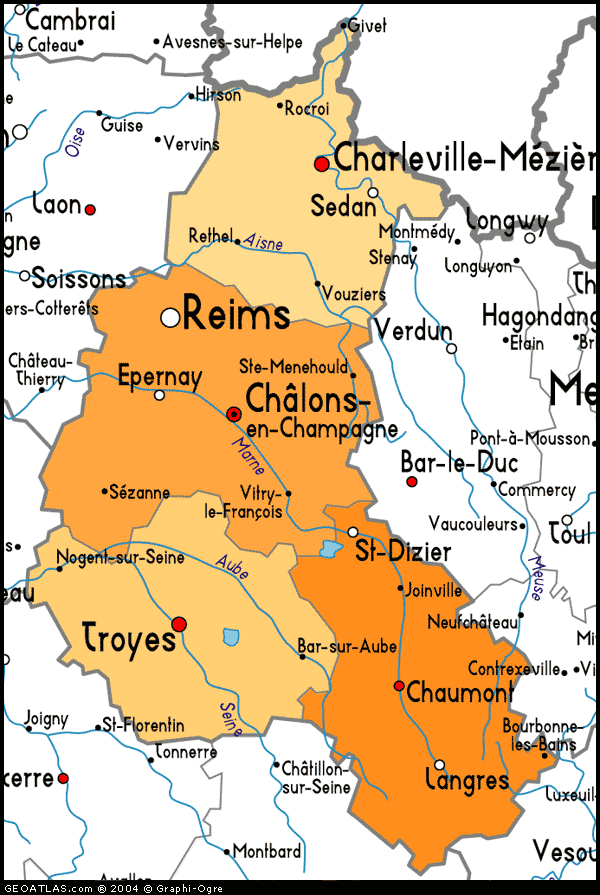When in Doubt Champagne
The name Champagne derived from the Latin Campania which identify the open country side north of Rome. In the early middle age it became applied to a province in north east France. Today Champagne is synonymous of finest sparkling wine in world.
The first serious mention of vineyards date back to the 5th century, at that time the wine was made out of Pinot Noir it wasn't sparkling and had a pale pinkish color.
In the early 17th century the winemaking in Champagne greatly improved under the auspice of a clerical men; Dom Perignon.
But it wasn't until the second half of the century that the wine great fame became reality with the introduction into the Court of Versailles and later on in London by the banished Marquis de St Everemond.
In the cold winter, normal in the region, the fermentation had the tendency to stop until the spring when milder temperature restart the fermentation, that used to be consider some sort of nuisance, as the resulting release of Carbon Dioxide was often strong enough to break the flimsy bottle used at that time. The Brits later on developed a stronger bottle that permitted drinkers to enjoy the "bubbles".
Although the more resistant glass still the pressure is so strong that of the few thousand bottles produced yearly up to half would break.
Today the Champagne bottles can withstand a pressure up to 6 atmospheres (the same pressure you have 150 feet below water).
In the early 1800s notable wineries like Madame (Veuve) Cliquot, Bollinger, Krug, Roederer and Moet started their history. The Champagne's history had also some set backs mostly caused by the Philloxera, deadly bug that destroyed 80% of the European vines, and the two  World Wars. During the Philloxera time the scarcity of prime material generated the first big wine scandal (some vintners took the short cut of sourcing grape outside what was considered the Champagne area). The French authority tried than to specify by law which Communes were entitled to produce Champagne; that attempt almost resulted in a civil war in 1911.
World Wars. During the Philloxera time the scarcity of prime material generated the first big wine scandal (some vintners took the short cut of sourcing grape outside what was considered the Champagne area). The French authority tried than to specify by law which Communes were entitled to produce Champagne; that attempt almost resulted in a civil war in 1911.
Was finally in the 1950's that the region has enjoyed unprecedented prosperity with sells quadrupling to well over 200 millions bottles.
Personally I drink a fair amount of Champagne all throughout the year and not just in special occasion. Sparkling wines in general are good with a lot of different plates that are hard to match with still wine, the carbonation and the delicate flavors cleans the palate making possible the marriage with Caviar or similar not so wine friendly food.
It is good as aperitif, during a meal, after a meal and for breakfast too maybe corrected with some peach nectar or blood orange juice. It have a festive aura that makes his appearance very well accepted in every occasion to the point that most non wine drinker would not refuse a glass of it.
In the end if you don't know what to drink or what to bring to a social event choose a nice bottle filled with "bubbles" and you will not go wrong.
Buona Bevuta a Tutti









3 comments:
Ciao Keith, I heard you meet with Terry. I'll see you soon
Ciao
I prefer to drink champagne in a speciall time like when i go out with my boyfriend or when i have an important meeting with my partners. I think this drink is very delicous!!!!
This is the reason why i was interesting to read this wonderful blog. Actually my boyfriend is decided to buy viagra and we going to drink a good champagne this night of course.
I had a meeting days ago with my partners in costa rica investment opportunities and we drank a great champagne, the taste was really delicious and the dinner, oh my god delicous too.
Post a Comment